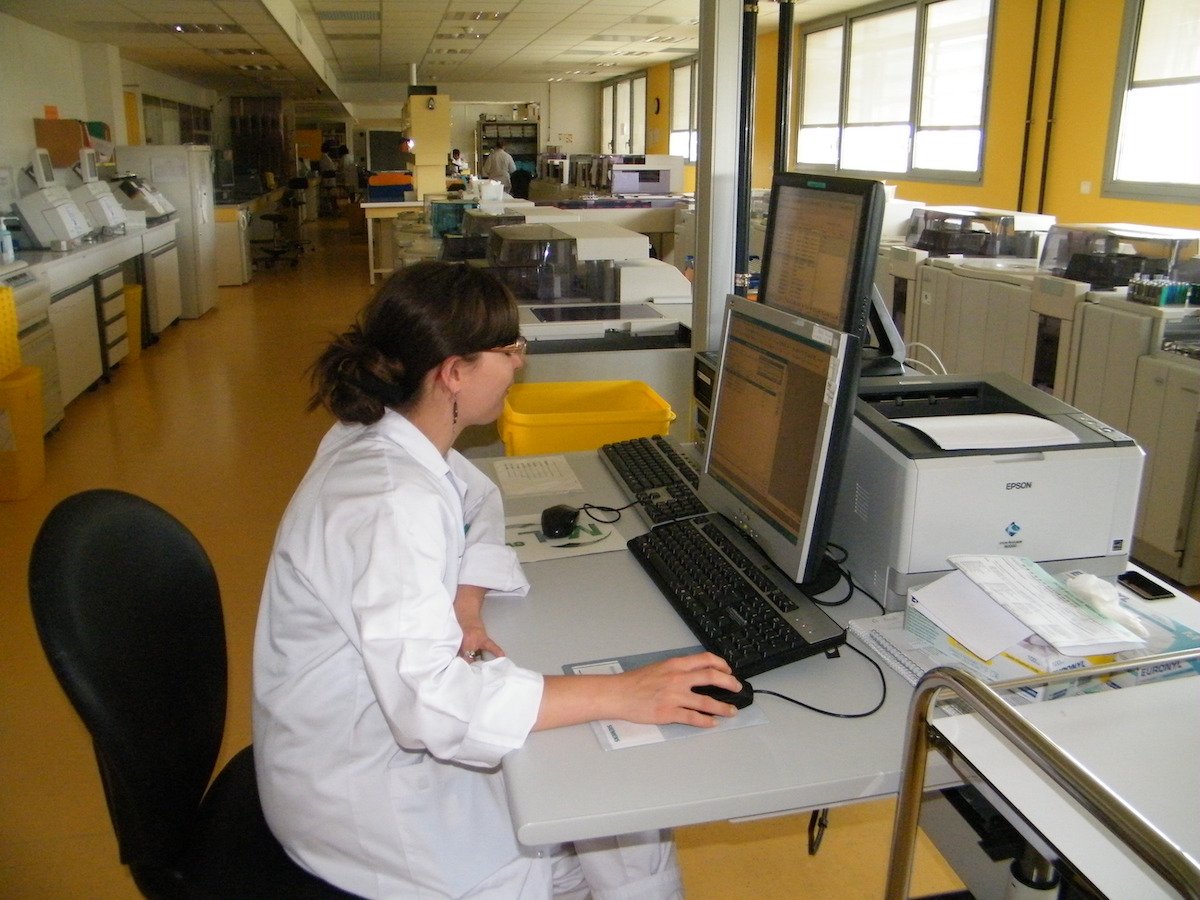CHU de Poitiers, France, CyberLab
Customer profile
The challenge
Enable doctors to order exams and consult the results online, directly from their department.
The outcome
All of the information, is accessible from the patient’s electronic record. The speed of diagnosis is improved.
A complete and bidirectional chain between the laboratory and departments of the CHU of Poitiers
“No more need to run and check a file, or telephone the laboratory to confirm if the
A first in France
The Poitiers hospital is the only CHU for Poitou-Charentes, a region with nearly 1.7 million inhabitants. Offering a complete chain of acute, follow-up and extended stay care, it has a capacity of 1,600 beds and a staff of over 6,000, including 517 medical personnel. A pioneer in hospital computerisation, the CHU had already set up its own electronic patient record system 20 years ago. This was converted into ‘full web’ mode in 2008, and today interfaces with a score of other applications: ultrasound, haemodialysis, the laboratory information system (LIS), the picture archiving & communication system (PACS), etc., which together cover the whole spectrum of the hospital’s medical informatics.
In 2005, during the construction of a new building that would also house the emergency department, the CHU decided to
Florent Ribardière, Hospital Engineer for the laboratory applications and robotics, continues, “GLIMS was installed before the move to the new building. At the time, we had diverse systems that needed to be

Since its implementation in 2004, the GLIMS solution for the
Once the patient’s sample has been collected, it takes less than a minute for the pneumatically-transmitted tubes to reach the
“The CyberLab server is heavily used. It is a user-friendly and intuitive tool. This means fewer telephone interruptions for laboratory staff, who can concentrate on their tasks.” For her part, Dr. Christine Pradère comments, “Now it is possible to make comparisons immediately, or to see the development curves graphically, for example for creatinines, anaemia or an inflammatory syndrome. There is also a
CyberLab: a secure chain
Starting in October 2010, in support of the CHU’s objective to integrate the process in a complete, automated chain, the CyberLab tool for ordering laboratory tests was gradually installed, beginning with rheumatology, geriatrics, ENT (surgery), ophthalmology (surgery), neurology, neurosurgery, trauma, pharmacy and endocrinology. Its deployment is ongoing across all of the facility’s departments and should take another two years. « The dialogue between the laboratory management solution and CyberLab is simple. There is little setup to do for the ordering tool. The LIS, specifically GLIMS, controls the generation of requests,” says Florent Ribardière.
In the units and the laboratory alike, the solution provides safety and traceability, two fundamental requirements for accreditation. In the patient record, context sensitive calls to CyberLab let the doctor specify an order, whether it is immediate or deferred. The nurses prepare the tubes and carry out the blood sampling based on the sample collection plan indicated in CyberLab (generated by GLIMS). Labels are printed and samples then labelled directly in the department. Then they are sent to the
“Before, the tubes were first labelled with the patient number and then relabelled at the laboratory. CyberLab has reinforced on the one hand safety, because labelling is done only once, and on the other hand traceability. Another advantage: if, for example, the
A window to the outside
With 140 technicians and 50 biologists, the biomedical laboratory, spread out over two floors of the CHU of Poitiers site, handles almost 2,500 files and 4,000 tubes each day. This volume is constantly increasing due to the regional biology project: the CHU of Poitiers is in fact increasing its activities by offering its services to nearby facilities (the hospitals of Niort and Lusignan, and soon those of Montmorillon and le Blanc).
“This window to the outside world impacts local medical practices, as well, with laboratory results being sent in electronic format using secure messaging. These results can then be reintegrated in the doctors’ own software,” explains Alexandre Pavy. In the coming months, an internet portal should also make it possible to consult CyberLab from outside the hospital, offering the possibility for duty doctors to check results from their homes.
Solution & benefits
CyberLab:
- Web application that makes it possible to order
analyse s and consult laboratory results from any part of the facility that has a Web navigator and network access. - Configuring of results type (definition of panels) to simplify ordering.
- Strong integration with the GLIMS laboratory management software and the electronic patient record (internally developed, TELEMAQUE).
- Status indicator from the request to the receipt of the results.
- Sample collection plan and single labelling directly within the departments.
- History of exam reports supporting graphics and images.
- Specific exam profiles for
specialised departments. - Audit of ordering for traceability of actions and stakeholders.
Benefits of CyberLab:
- Accelerates communication and data sharing between the laboratory and the hospital’s care departments, smoothing the overall process.
- Increases safety and reliability by automating processes and minimising potential human error during information entry.
- Reinforces traceability, to meet regulatory requirements.
- Simplifies the preparation of tubes in the care departments by providing sample collection plans.
- Enables consistent ordering by doctors in the same service.
Introducing CyberLab was a big relief … It is a powerful and user-friendly tool, used a lot by all the hospital departments.